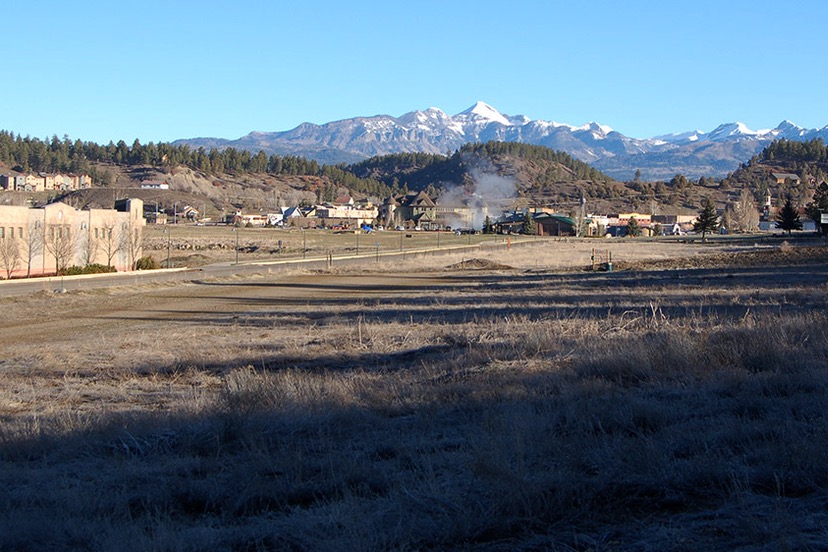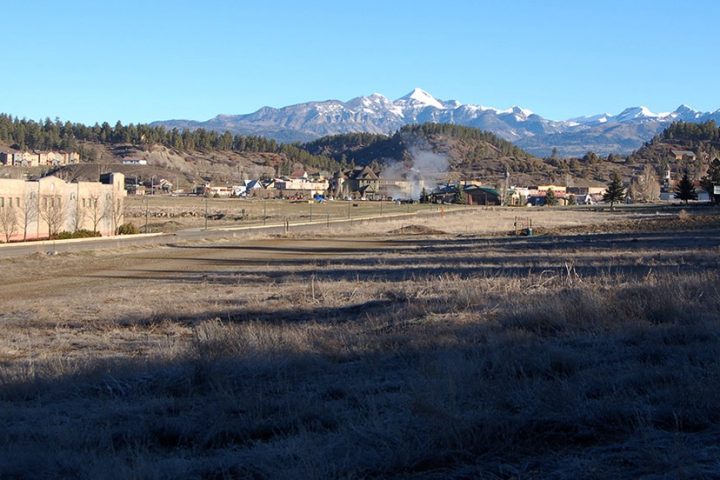During our conversation on Vista Boulevard — looking at the vacant 37-acre parcel owned by the Archuleta School District as a possible site for future workforce housing, or perhaps a brand new school complex, or perhaps both — we were reminded that School District property in fact belongs to the taxpayers, and the proper way to make decisions about public land, and public debt, is to allow the public a chance to give input.
This doesn’t always happen, of course. When the Archuleta County government wanted to purchase property in Harman Park and build a $20 million law enforcement complex there, they went directly to the taxpayers and asked them to bless the project, by approving a dedicated funding stream via a sales tax increase.
When the voters said, “No”, the Board of County Commissioners went ahead and built it anyway, without voter permission.
But I seriously doubt the same thing would happen with the School District’s Vista property, considering the District’s current leadership. I suspect the District would abide by the will of the voters, if it ever came to a vote.
In the meantime, we have various opportunities to address the housing crisis, in terms of vacant land. If there’s one thing Archuleta County is blessed with, it’s vacant land. Even the historic downtown, surveyed and platted in the 1880s, is blessed with quite a bit of vacant buildable land.
My family’s downtown parcel, for example, measures 150 feet by 250 feet, which is about 37,500 square feet. About 5/6 of an acre.
Our house and garage take up only 2,350 square feet. The property could easily accommodate an additional 5 house/garage units of similar size, based merely on the available square footage. If someone wanted to build two-story four-plexes on the property instead of single family houses, however, my family could probably fit 10 additional dwelling units on the property. Many of the properties in my neighborhood could easily accommodate two, three or more additional dwellings on their existing property.
Vacant land in downtown Pagosa? We have plenty.
With a simple change in property owner attitudes and zoning regulations, downtown Pagosa Springs could easily grow from from 1,500 people to 6,000 people, without adding a single square foot of additional property.
Merely in terms of vacant land, we could completely solve Archuleta County’s housing crisis within our historic downtown limits, if all of our vacant downtown spaces were allowed to accommodate new dwelling units… so long as the new units were available only to full-time residents, and did not become vacation rentals. Piece of cake.
We could also completely solve Pagosa’s housing crisis overnight, without building a single new house, if all of our second-home owners were to convert their homes into long-term rentals.
Neither of those things will happen. Second-home owners bought their homes expressly to be second homes. Vacation rental owners bought houses and condos expressly to be vacation rentals. And most full-time residents in Pagosa’s historic downtown have zero interest in building additional dwellings on their historic residential parcels.
Generally speaking, no one wants to solve the housing crisis in Archuleta County, if it means changing the way we think about our personal private property.
That leaves us with one basic option. Trying to solve the crisis using public property.
The Pagosa Springs Town Council spent a full day, yesterday, discussing their government priorities for the 2022 fiscal year, with some of the trickier priorities scheduled to require additional fiscal years.
The second half of the all-day retreat — from about 1:45 until about 5pm — was focused on the housing crisis. Much of the discussion focused on ways to encourage the owners of private property to build workforce housing.
Wasted breath?
Although we already knew, back in 2005, that workforce housing was heading for a crisis situation, the owners of private property have exhibited just about zero interest in addressing the problem. (Sadly enough, I can include my own family in that group of disinterested private property owners.) The affordable housing that’s been build in Archuleta County since 2005 has been the work of non-profit organizations like Habitat for Humanity, Colorado Housing Inc. and Housing Solutions for the Southwest.
Why so little interest from private citizens in helping to address this rather desperate situation? Good question. I think the answer is related to the way Americans think about “houses”. We tend to view “houses” as something that should generate a profit. Houses are no longer places to live, so much as they are “investments”. In our minds, a house should produce profit — when it’s built, and whenever it’s sold. This would help explain why, typically, only charitable non-profit organizations are building affordable housing in America.
Over the past 16 years, our local governments have talked and talked about the housing crisis, but the main outcome has been reports from various consultants, telling them how serious the problem was. And the problem has merely grown worse.
Much worse.
A slightly different consultant effort, three years ago, produced the “Roadmap to Affordable Housing” — a 54 page analysis that recommended 58 productive steps that could help us address the housing crisis. A few of those recommendations have been successfully accomplished, including a major low-income housing project — 34 units under construction on Hot Springs Boulevard, under the auspices of the Archuleta County Housing Authority.
Other than that particular LIHTC project, however, the direct efforts by our local governments have produced zero workforce housing over the past 16 years. Not on public land, and not on private land.
I hear the School District has plans to start building some affordable housing next year, although the plan has not been presented publicly yet, nor has it been approved by the School Board.
The Town government recently purchased two vacant parcels on Apache Street, and hopes to find a developer willing to build workforce housing on those parcels. Their initial Request for Proposal (RFP) for the parcel at the corner of Apache and S. 5th elicited zero responses.
In spite of the Town’s 16-year failure to produce any significant workforce housing, the current Town Council apparently has faith — to judge by their discussion yesterday at their retreat — that adding additional paid staff to the Town bureaucracy will result in a different outcome.
Not that I can blame them for doing so little over the past 16 years. Considering my own family’s track record.
We’ve all failed to fix this. All of us.


